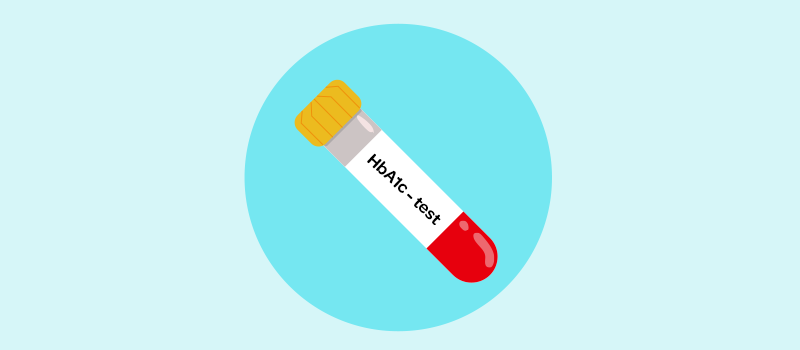Best Insulin Pumps: Pros & Cons

Diabetes is a chronic condition in which there are high blood sugar levels. This condition happens when the pancreas does not make enough insulin, or your body doesn’t use it efficiently as others without diabetes. Insulin is a hormone that regulates blood sugars. Some diabetic patients use insulin injections along with medication, while type 1 diabetic patients strictly rely on insulin. Insulin pumps are personal devices that help reduce the number of needle sticks; in addition, insulin pumps provide a steady stream of insulin for more accurate dosing. Even though insulin pumps are a personal choice, type 1 diabetic patients, children, and people that struggle to follow a set schedule for insulin injection can benefit the most from this medical device.
Please continue reading to learn more about the pros and cons of using an insulin pump. If you and your healthcare provider are considering insulin pump therapy for high blood glucose, we will also list some of the best insulin pumps available on the market.
What are the different types of diabetes?
First, let’s briefly examine the types of diabetes and what causes them. According to the CDC and American Diabetes Association, there are mainly three types of diabetes.
- Type 1 diabetes is a genetic condition typically diagnosed during childhood or young adulthood. People with type 1 diabetes do not make insulin.
- Type 2 diabetes usually develops over many years and is often diagnosed in adults. It occurs due to insulin resistance, i.e., the body is unable to use insulin properly.
- Gestational diabetes develops due to hormonal changes in the body during pregnancy.
Prediabetes or impaired glucose tolerance is when blood sugar levels are higher than normal but not high enough to be in the diabetic range.
What is an insulin pump?
An insulin pump is a small computerized device that fits into the palm of your hand. Most insulin pumps are designed to be implanted under the surface of the skin. Insulin pumps deliver a steady supply of insulin via a pre-programmed dosing regimen depending on how much insulin you need. Many people who need to take insulin several times a day to manage diabetes find insulin pumps to be more convenient compared to multiple daily injections. Keep in mind that you still need to check your blood sugar while on an insulin pump unless you use a continuous glucose monitoring device.
How does an insulin pump work?
An insulin pump delivers a small dose of insulin continuously at the basal rate (basal insulin). This helps to keep blood sugar levels stable overnight and between meals. It is, therefore, a replacement for long-acting insulin such as Lantus, Levemir, Basaglar, or Tresiba.
In addition, an insulin pump can dispense a bolus dose to cover periodic high blood sugars, for example, after a large meal. This is a replacement for short-acting insulin, such as Novolog, Humalog, and Apidra. Insulin pumps calculate bolus doses based on the information you provide, such as your food intake and blood sugar levels. However, the insulin pump will not administer the bolus doses until you make the command.
If you use a continuous glucose monitoring device, certain insulin pumps can automatically adjust the basal rate based on the reading from the continuous glucose monitoring device.
Is an insulin pump and continuous glucose monitor the same thing?
An insulin pump is not the same thing as a continuous glucose monitor (CGM). Continuous glucose monitoring machines automatically measure your blood sugar levels every few minutes without finger sticks. CGM is not a dose calculator; however, CGM readings provide your diabetes team with better clinical pictures to manage your diabetes. Insulin pumps can also adjust the basal rates based on the glucose readings from a CGM.
Insulin pumps, on the other hand, are for insulin delivery, meaning they give you a steady supply of basal insulin and on-demand bolus doses based on how your healthcare professional programs the pump.
What are the different types of insulin pumps?
There are many different types of insulin pumps for diabetes treatment. Traditional insulin pumps have a tube and a cannula (needle) delivering insulin underneath the skin. This type of insulin pump has buttons on the pump body to program insulin delivery and suspend the insulin infusion if needed.
However, insulin pump technology has advanced greatly in recent years. Now, diabetic patients have more flexibility with insulin patch pumps. Without external tubing, the patch pump is also known as a “tubeless pump.” Patch pumps have a pod containing the insulin reservoir, a cannula, and a delivery system. An adhesive patch keeps the patch pump on top of the skin. Patch pumps are controlled wirelessly through a remote control or a smartphone app.
You might have heard of the term “advanced diabetes devices.” Advanced diabetes devices are insulin pumps integrated with continuous glucose monitors (CGM). The insulin pumps automatically adjust the insulin delivery based on the CGM blood glucose levels. With the ability to predict low blood glucose and automated insulin delivery, these devices provide a “hybrid closed loop system” essentially functioning as the artificial pancreas.
Who needs insulin pumps?
People with type 1 diabetes are most likely to use an insulin pump for diabetes management. However, those with type 2 diabetes who require insulin administration several times a day may also benefit from these computerized devices for diabetes care. Insulin pumps offer convenience to anyone who needs to inject insulin multiple times a day.
Are insulin pumps worth it?
The decision to use an insulin pump is a matter of personal preference. Many people choose insulin delivery through a pump because it offers them flexibility and a better quality of life with more freedom for physical activities.
Also, insulin pump therapy can help to manage diabetes better because it allows for more precise insulin delivery at doses as small as 0.025 units. Using an insulin pump can result in a reduced incidence of drastic variations of blood sugar throughout the day, including early morning and overnight. Background insulin pump therapy also makes it easier to handle blood sugar levels on sick days.
What are the downsides to an insulin pump?
Using an insulin pump puts you at risk of diabetic ketoacidosis (DKA) if the pump or infusion set malfunctions. There is also a risk of an allergic reaction or skin infection at the infusion site. Some people do not like having a visible medical device for insulin delivery. Insulin pumps also require more training to use the pump properly.
Can you get insurance coverage for an insulin pump?
Devices like insulin pumps and continuous glucose monitoring machines are covered under a section of health claims called durable medical equipment. Be sure to read this section in your health insurance policy carefully to ensure you meet the eligibility criteria.
Also, check if only specific brands of insulin pumps are covered by your plan. Generally, certain commercial health plans will require prior authorization for insulin pumps. Medicare coverage includes infusion pumps if considered reasonable and necessary.
How to use an insulin pump safely and effectively?
For safe and effective insulin pump therapy, you will need to:
- Check your blood sugar levels at least 4-6 times a day, or use a continuous glucose monitor.
- Understand carb counting (count carbohydrates) to match with the pre-programmed bolus doses.
- Work with your diabetes educators to understand the basics of diabetes, hypoglycemia (low blood sugar), hyperglycemia (high blood sugar), insulin delivery through a pump, and insulin dose adjustment based on carbohydrate intake and physical activity.
- Continue to work on improving your HbA1c with lifestyle changes.
- Learn to download glucose data from your insulin pump and share it with your diabetes team.
What is the newest insulin pump in 2023?
Your healthcare provider can help you pick the right insulin pump for you. In the meantime, we vetted some brands for you. Here are the pros and cons of some top-rated insulin pumps and infusion sets.
Medtronic MiniMed 630G System
Pros: User-friendly screen, water resistance, 8 different preset bolus doses for work days, off days, optional integrated CGM (continuous glucose monitor).
Cons: Larger and heavier than other insulin pumps.
Omnipod Dash
Pros: Automated cannula insertion, tubeless pump, discrete size, bolus calculator from a large library of foods, compatible with smartphones, low upfront costs.
Cons: No CGM integration, the insulin pump must be programmed by a professional.
Tandem T-Slim X2
Pros: Can automatically adjust basal insulin rates based on CGM data, multiple alerts, long battery life, and no disposable batteries.
Cons: Small buttons, the insulin pump must be unlocked to make changes.
References:












SOCIAL